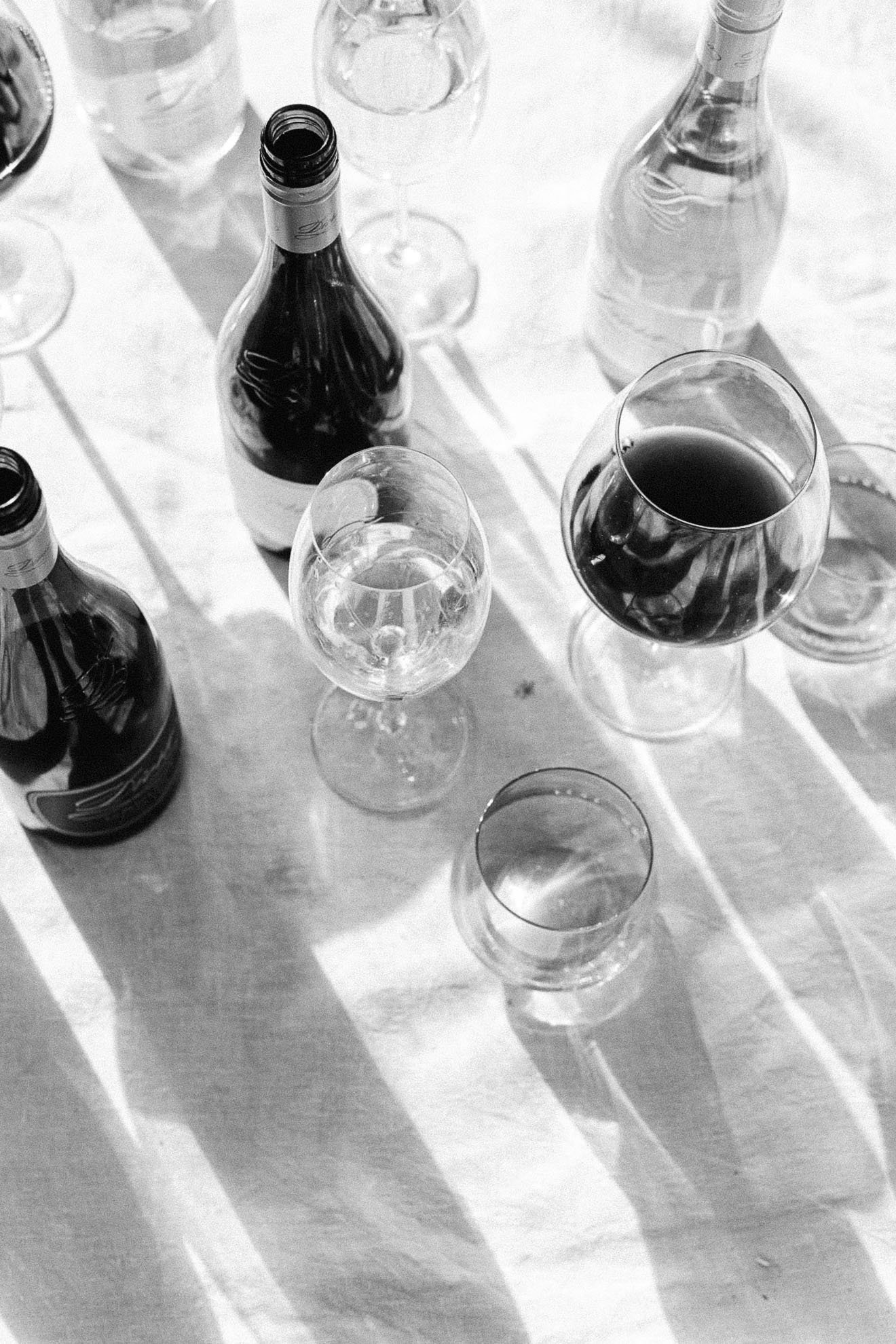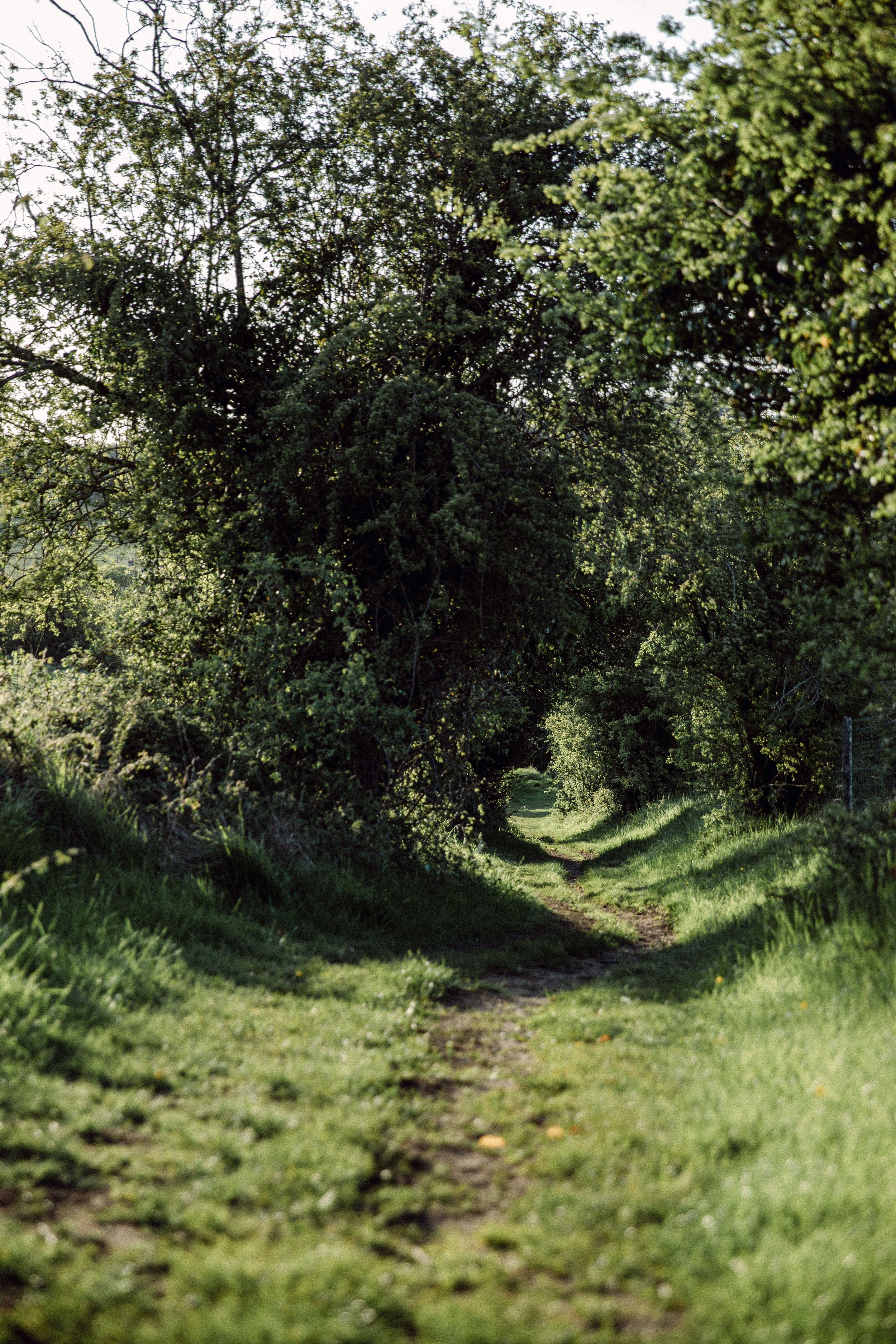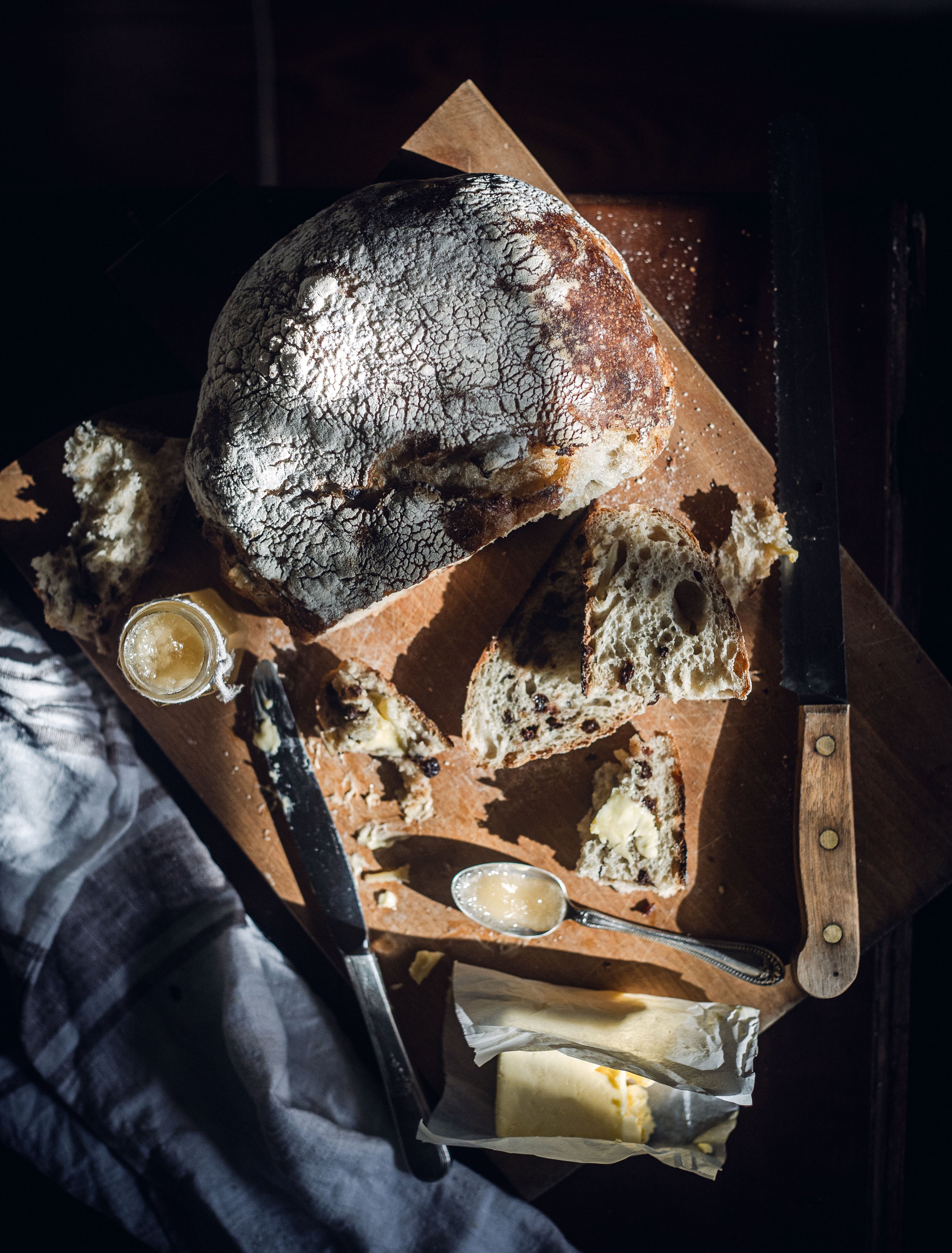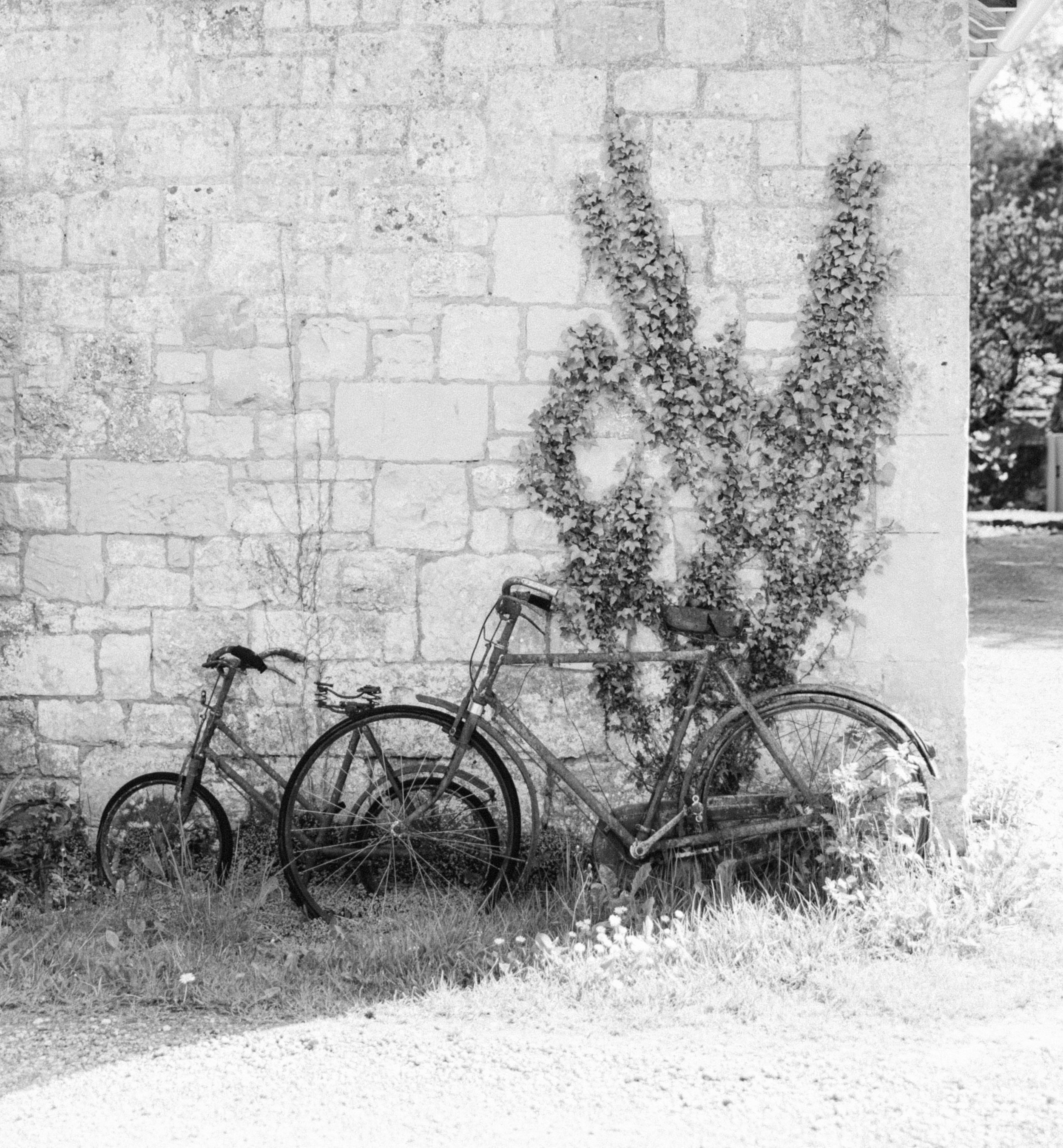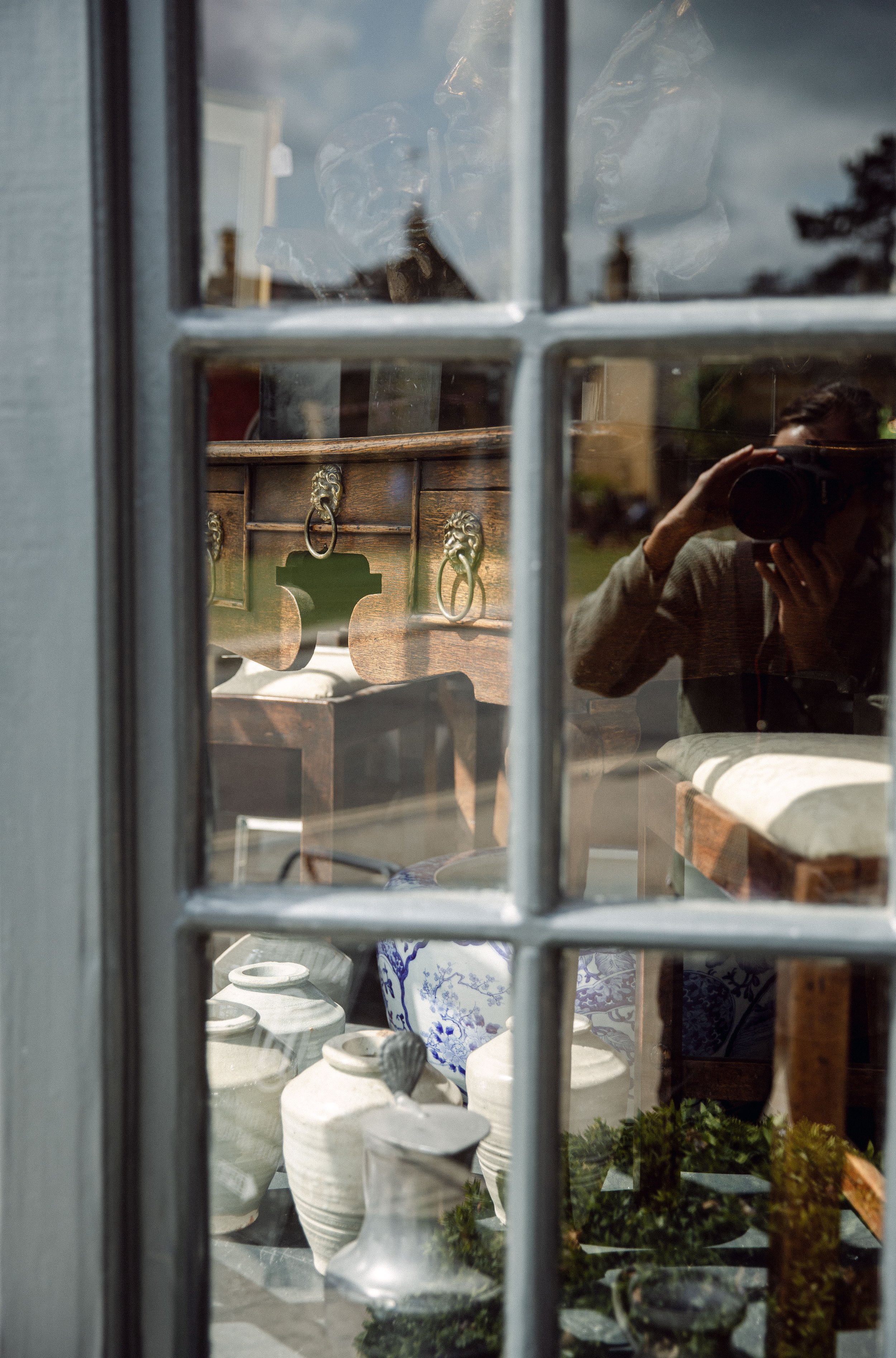Visual Storytelling Series | Suze Morrison
Award-winning recipe developer and photographer Suze Morrison creates captivating and emotive visual stories from her home in the UK. She is wildly talented and infuses her work with hints of the natural world. She shares her stories using natural and artificial light, which are undeniably striking. Her love of home cooking and food comes across all of her photography and videography work. You can see more of her beautiful work here.
F Stop & The Visual Storytelling Eye
This post will be a little different than my last posts as I'm not very technical, but I think it's an essential topic for visual storytelling. And that is the relation between a F-stop and visual storytelling. As you know, an f-stop, such as f 1.4, f 2.8, f 5.6, f 11, etc., indicates the amount of light coming through the aperture. (The f stands for focal length) So, a wider f-stop, meaning the opening of the blades is wide open like a big pupil of our eye, is classified by a smaller number, such as f 1.4 or f 2.8. A wider opening of the aperture means more light can come in, thus a smaller f stop number.
Rethinking Rejection: A Redirect
I've received so many nos in my life. No, thank you; we are all set for this calendar year. Thank you kindly for your inquiry, but we source all our photography in-house. We are not looking for any partnerships, but we wish you all the best. Unfortunately, she can not take on another proposal this year. She wishes you the best of luck with your book. Do any of these sound familiar?
What A Restaurant Table Can Teach You About Food Photography Styling
Styling in food photography ranges on a broad spectrum. On one end, it can be minimalistic and clean to overly styled, erring on the verge of contrived. I think the right balance is somewhere in the middle, where it feels and looks believable but intentional. A slice of life, if you will. When I first started shooting food photography for clients, my styling was all over the place. Finding my stride and developing my eye to know what looked right took me a while. It boils down to practicing in various scenes, using different elements, props, lighting, and backgrounds. As always, it begins with telling a story.
Curating Your Photography Portfolio
Creating a compelling portfolio is one of the most important tasks for new photographers. It’s not something that happens overnight; let’s just say that. While you may be so excited to get your work out there, it isn’t just as simple as picking a few favorite photos of yours and uploading them to a gallery or website. A well-rounded portfolio takes time to put together, with a lot of thought and intentionality behind it. Even if you don’t have a large body of work or roster of client work to pull from, there are subtle ways you can begin to carve out your portfolio.
Balancing Creativity With Security
Taking the leap of faith to work as a full-time photographer can be nerve-wracking, to say the least. Security is a fundamental human need. And the creative world can be a bumpy business road to travel. Creatives tend to put so much pressure on themselves and their work. Balancing our creativity while financially being able to support ourselves is something every photographer goes through at some point. I have yet to meet a "successful," published, well-established photographer who didn't have some growing pains and financial struggles. In the early days of my career, I believed that if I wasn't working full-time as a photographer, I hadn't "made it," or I was just a hobbyist.
5 Rules Of Visual Storytelling For Photographers
You have your unique perspective and view as a visual storyteller and photographer. No one has the same eye or history as you. How you capture something may be entirely different from how I see something, which means there is always room for a new eye in the field. I’ve found that these five rules are the foundation of good storytelling in photography.
Working With Brands As A Visual Storyteller
Maintaining your style while working with brands can be a delicate balance. On the one hand, brands come to you because they value your eye and expertise, but they also have a specific agenda of what they need. When I first started out, I said yes to every opportunity that came my way, and it wasn’t always a good thing. My eagerness to partner with a brand, any brand, left me feeling somewhat untrue to me and how I work. I accepted client work that only wanted straight product shots when in reality, this type of photography is far from what I enjoy and my strengths.
Looking To 2024: 5 Lessons I've Learned
It was a quiet Christmas with family. Christmas is usually a time when I let my camera rest and put it aside, apart from a few festive activities. Since I’m rarely home, I really just try to be present in the moment with my family and our traditions. Honestly, I couldn’t tell you what I did over the two-week break, and it’s probably what I needed. A true break and spending quality time with family, reconnecting to my inner little girl who believed in the magic at Christmas. I've never been a New Year's Eve person, but now that I'm back on the island, tidying up and making way for the new, this year feels different. 2023 was a trying one.
Choosing Backgrounds In Food Photography
What draws me to food photography is not just the cooking (and eating!) of a dish, but telling a tale through styling, lighting, color, and all of the creative elements that go into a scene. That’s the fun part, where we can really have a sense of control, and our creative voice shines through. Two people could make the same batch of scones and style and photograph them in a completely different way, which ultimately tells two different visual tales. Choosing the right background is just as important as all of the other fun bits and accessories that we use to style a scene. Determining the background or surface is actually where I begin first when I map out how I want to shoot a recipe or a baked good.
Capturing A Winter Scene
Despite the chill and frostbitten fingers, winter is one of my favorite times to bring out the camera. Everything glistens and sparkles, not just the Christmas lights on the tree or the cozy fire; the landscape completely changes. There is a magic to snow. A coziness that you can feel in your bones. Crafting a visual story starts with just that - setting the scene, taking in the atmosphere, or literally the landscape. As visual storytellers, it’s not just about capturing what’s happening in front of us, say a fresh batch of cookies, but telling the entire scene as a whole. How can the viewer feel the cold? How can they see the sparkle in the trees? How can they feel that urge to bundle up under a wooly blanket next to a roaring fire? It is much in the details as it is about the environment and the feelings.
The Importance Of Building A Brand
A brand? What do you mean? I’m a photographer?! I asked my mentor. When I first started my photography career, I dipped and dabbled in many things, from food to family portraits to landscapes. It’s natural for our taste to evolve over time, and picking up little bits and pieces as we go along is all part of the process of making your work uniquely yours. One thing, however, I didn’t understand was that it was much more about taking a pretty photo and more about creating a brand. Have you ever noticed how some food and lifestyle photographers work all just seem to blend together? You can clearly tell who they learned from. This one looks theirs, and theirs looks like hers…it’s not often to see something fresh and unique. Think the same stack of brownies, white background, marble counter, with a little glass of milk on the side? You know the styles I’m talking about.
Comparing Your Work To Others
She booked that? Why doesn’t my work look like hers? Why can’t I work them? Ugh she is always working with the best brands? His photography is so much better than mine. Why can’t my photos look like hers?
We’ve all been there. Many times, I’m sure. It’s completely normal and almost unavoidable if we are human. The dreaded pitfall of comparing ourselves to others. As humans, we naturally compare ourselves to others because our primal brain is trying to keep us safe, protect us, guard our resources, and fit in. So in order to do that, our brain looks for ways to safeguard our wellbeing, retain homeostasis, and belong to a specific community. Comparing ourselves to others isn’t inherently bad because it can help us grow and evolve.
How To Get Out Of A Photography Rut
If you are just beginning your photography journey, it can be easy to get discouraged by a lack of engagement, bookings, and inquiries. You are talented, after all, with so much to offer, so why is it so hard to actually get booked? When we get into this mental rut, our creativity can fall right down there, too. Our once vivacious and enthusiastic creative energy can quickly turn stagnate. I have been there many times, and it’s completely normal to feel like you’re in a rut. It’s just one of those stones in our path, and yet all it takes is to keep putting one foot in front of the other and look toward where we are going. If you are in a dry spell, be it a creative, client, or financial one, often the best thing to do is to let the camera collect dust on your desk but to give yourself an assignment.
A November Reset
In Vermont, November is one of my least favorite months. It can be challenging for many to adjust to the duller, colder weather. Growing up on the farm, I dreaded absolutely dreaded; I tell you! the gloom and doom of November. The doldrums. It’s an awkward period between the vibrant fire of the forest that was the foliage and the arrival of the first real snow. Just snow already, I’d say silently to the sky! Anything but freezing rain! The trees are lackluster, skeletons of their former selves, bracing the blustery wind with the impending snow on the way.
Visual Storytelling Series | Lean Timms
Driven by her love of nature and natural light, Australian photographer, Lean Timms captures authentic and slow moments of life through her interior, travel, and food photography. She shoots for various travel magazines, editorials, and lifestyle brands. As an explorer at heart, her work takes her across the world, documenting new places and teaching her renowned photography workshops. Her work beautifully captures life moments that evoke a sense of time, place, and with a dash of spontaneity. I am particularly drawn to her travel photography with her minimalist, yet intimate approach of capturing the essence of a place.
Black & White Photography
Black and white photography was the first impression I had of the art itself. My mom had a makeshift darkroom in our barn, The Shop, as we called it, it was both her floral workroom and where we stored the horses’ tack, saddles, bridles and such. She blacked out the windows, and I remember thinking she was doing experiments in there or something because there were all of these trays and solutions and red lights. It was a very odd sight for a 7-year-old. “Can I come in now?” I’d say in a huff if she locked us out because, as you can imagine, three eager little busy bodies always coming and coming isn’t the best scenario for a dark room.
Visual Storytelling Series | Jamie Beck
Author and Photographer Jamie Beck is a breath of fresh air and a visionary in the world of visual storytelling. Known for her natural, romantic, and expressive style in her self-portraits and still lifes, her work is inspired by her adopted home of Provence, France and the grand masters of art such as Cézanne, Van Gogh, Botticelli and others. Her best-selling book, An American in Provence, is a feast for the senses as much as it is about the art of photography. I can't wait for her new book, The Flowers of Provence., to be published on October 23. It was an honor to have her part of this series.
A Different Perspective
Sometimes the most intriguing shots are found in unexpected places. How many times have you "packed up your bags" and called it a day after checking off your essential shot list? I know I have before only to move quickly to the next thing! Creating a compelling visual story comes from not just the apparent scene unfolding in front of our eyes, but in the subtleties and the details. It's natural to be absorbed in the moment or solely focused on the subject and forget to look around us. Real magic happens when we step outside of our comfort zone of angles and look at our subject or the scene from a different perspective.
A Composition Practice
Composition is the underlying language that creates a compelling photograph, maybe we don’t understand it right away or maybe it’s obviously spelled out right in our face we can’t miss it. Think of it as a secret language we can use to communicate our story and highlight our subject. If it’s a larger scene or full table, there’s more room to play and mix things up. We can make it as obvious or subtle as we like!



